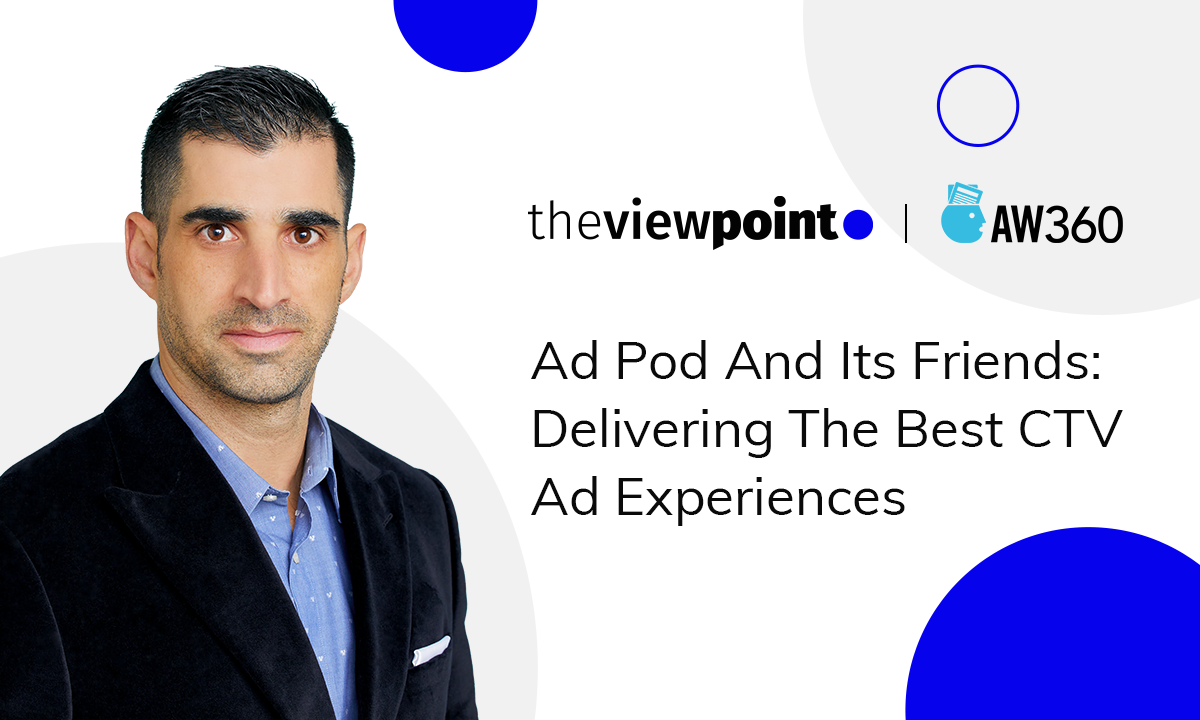
What is an OTT Monetization Model: Comparing AVOD, SVOD, TVOD, Hybrid
AVOD, SVOD, TVOD, and Hybrid OTT monetization models are on the rise since the coronavirus pandemic has largely kept people in their houses. They prefer to go online for entertainment, which translates to 72% OTT penetration among U.S. households.
Considering that the current trend of cord-cutting is likely to keep growing, and the popularity of streaming video services is booming, it’s expected that OTT will prosper even more. This shapes a perfect environment for video publishers to monetize their content. In this article, we’ll reveal the nature of OTT, and cover the specifics of each monetization model used to serve OTT video .
What is OTT, and What Does it Have to do with Monetization?
OTT (Over-the-top) is a modern way of delivering video content on cross-platform devices including SmartTVs, mobile phones, tablets, and any other gadgets that are internet-connected. Basically, it’s the next generation of satellite and cable broadcast services.
It allows viewers to watch feature films, TV series, news, etc., at any time just by choosing them from OTT platforms’ libraries, while classical program broadcasting sets its own schedule. As an example, some of the most popular OTT video services are Netflix, Hulu, Roku, Disney+, Amazon Prime, AppleTV. But that’s not the full list.
Media owners mainly use four monetization models for OTT video. Let’s take a look at what they are, and what pros and cons they have for publishers.
What are SVOD, AVOD, TVOD and Hybrid?
Before talking about the types of OTT monetization models, a publisher’s first step should be to select an online video platform. There are thousands of them, and each has its own specifics. For instance, some services can only support two types of monetization, while others support all of them. And there are a lot of features and different settings inside each one, making it important to find a comprehensive and reliable service. Once a publisher has settled on a platform, they can then choose from the following monetization models:
AVOD (Advertising video on demand).
As AVOD meaning suggests, this model is based on ads that the viewer has to watch before or during watching their desired content. Pluto TV, Xumo, Vudu, Crackle, and Tubi are examples that use this model. OTT AVOD service works best for viral videos that no one is actually going to pay for, like funny cat videos or other memes. These sorts of videos can be really short but gain millions of views, earning substantial revenue for publishers and take full advantage of widespread real time bidding optimizations.
Advantages: AVOD is one of the most popular monetization models, especially since the COVID-19 pandemic has caused people to tighten their belts. Its free nature attracts an immense audience, so it’s easy for publishers to lure in advertisers and generate revenue.
Disadvantages: There is one core disadvantage – viewers often feel irritated when getting distracted by ads too often while watching their video. It’s worth noting that, unlike the TVOD model, AVOD confers no ownership rights to the viewer. But publishers can minimize this negative experience by setting up frequency capping.
SVOD (Subscription video on demand).
The opposite of AVOD, this monetization model drives revenue to publishers not from ads, but from viewers’ subscription payments. Viewers, in turn, get an ad-free experience. Netflix is the flagship service of this monetization model. That said, there are other very popular SVOD platforms, like HBO, Amazon Prime or Disney+, to name a few.
Advantages: In most cases, engaged subscribers provide a high LTV (lifetime value) rate, which is a core component of building long-term recurring revenue streams. Also, word-of-mouth marketing is quite common here and it also facilitates brand loyalty. The number of U.S. SVOD service subscriptions is forecasted to hit the 1.161 million mark by 2025. This also helps publishers simply their monetization, instead of having to keep in mind the intricacies of things like spo meaning.
Disadvantages: This monetization model is not just about knowing SVOD meaning and its implementation – publishers also have to create exclusive and engaging video content that viewers can’t find anywhere else. And it’s crucial to deliver this content on a regular basis, otherwise, the audience may just cancel their subscriptions.
TVOD (Transactional video on demand).
Here, users pay for a single piece of content, like one episode or one season of a TV series, as indicated by TVOD meaning. That’s why the alternative name of this monetization model is pay-per-view. Obviously, its prices are much cheaper than in SVOD. For greater operational convenience, publishers should pay attention to whether the platform has an integrated payment system so that users can purchase videos with ease. TVOD services are popular among viewers who want to buy (‘electronic sell-through’) or rent (‘download to rent’) studio-quality movies. Examples of platforms that support TVOD are Google Play and iTunes.
Advantages: This monetization model offers flexible content package options. Thus, publishers can set one episode, season, or movie per transaction. TVOD is a solid money-making option for publishers, since it provides timely access to the latest cinema and TV show releases, and to a wide range of live sports events that are in great demand.
Disadvantages: It’s not that easy to retain viewers as many of them purchase a piece of content and then leave the TVOD platform until the next interesting release is posted. If publishers want to ensure better retainment for this monetization model, they’ll have to invest in additional marketing promotions such as retargeting, which leads to extra costs.
Hybrid Model.
This one is a catch-all term for anything that merges any of the abovementioned monetization models. For instance, a user can receive access to a free content library of a platform that works like AVOD. However, besides free content, there is also a premium one available, which requires a paid subscription, e.g Hulu and Roku Channel. And the subscription can be both on a SVOD and TVOD basis. YouTube is a prime example.
Advantages: Providing users with a ‘try before you buy’ option is likely to evoke trust, and if the content meets viewers’ expectations this can turn to a solid loyalty. Having AVOD options on a platform can help engage a wider audience, that afterwards can become SVOD subscribers.
Disadvantages: AVOD, SVOD, TVOD — each of these models has its own specifics and requires deep expertise to generate revenue. So having it all-in-one takes greater efforts from publishers.
What’s Next?
As online video consumption gains momentum due to the crisis, the OTT content delivery service is thriving. The booming audience on OTT entices advertisers, which is an unambiguous trigger for publishers who use the AVOD video on demand model. That said, such a surge is also helpful to SVOD video creators who possess exclusive, popular, and valuable content, as viewers are ready to pay for access to it. Publishers that can find the optimal model that works best for their own video content are most likely to reap the rewards, and can easily integrate into their own platforms by figuring out the difference between API vs SDK.
Takeaways
The ad tech ecosystem is embracing diverse video monetization models today, so publishers can choose the best for their goals and strategies. Now that you know about what SVOD, TVOD, AVOD, and their Hybrid model are, you can see that they are double-edged swords, each one with its own advantages and disadvantages. Still, regardless of the chosen type, the very first and important task for media partners is to select a comprehensive online video service and then choose an efficient advertising platform like TheViewPoint, that will provide them with competent and convenient tech capabilities and support – a good step into the future of TV advertising.
Related
Programmatic TV Tax Day is Not Just April 15. It's Every Day
This blog examines the significant "AdTech tax" in Connected TV advertising, advocating for Tatari's direct integration with publishers to bypass hidden fees, resulting in substantial cost savings and enhanced transparency.
Read more
Ad Pod And its Friends: Delivering the Best CTV Ad Experiences
Aiming to stand out from the crowd and surpass consumers’ expectations, CTV advertisers have to be allied with publishers and very savvy at applying innovative advertising techniques, like frequency capping, competitive ad separation, and deduplication. Though still raising a lot of eyebrows, these tools have already become the next big thing in the advertising world. So, before diving deep into the details of ad pod management, let’s take a sneak peek behind the scenes of modern CTV play.
Read more
Everything You Need to Know About Real-Time Bidding
As programmatic advertising is gaining momentum, RTB or real-time bidding comes in. In fact, most platforms in ad tech today are RTB enabled. But what does that actually mean? What is an RTB platform and why is it so important for digital marketers? Let’s get the answers to these questions and more.
Read more


